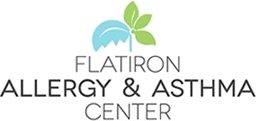Food Allergy
Food Allergy (Allergy Antibody Dependent)
Food allergy affects 5% of children and 4% of adults in the United States and is defined as an adverse health event that is immune mediated and occurs reproducibly.
Individuals with IgE mediated food allergy develop allergy antibodies (IgE) targeted against food allergens. When these IgE antibodies bind food, immediate (usually minutes to a couple of hours) allergic symptoms can develop including:
- Itching
- Hives/welts
- Swelling of Lips, Tongue, and/or Throat
- Wheezing
- Vomiting
- Lightheadedness
Broadly, the manifestations of IgE mediated food allergy are categorized as:
- Anaphylaxis
- Immediate Gastrointestinal Hypersensitivity
- Acute Urticaria
- Contact Urticaria
- Angioedema
- Oral Allergy Syndrome
Food allergy can be life-threatening.
The most common food allergens are egg, cow milk, soy, wheat, peanut, tree nuts, fish and shellfish.
Allergists are considered the experts in food allergy, and diagnose this condition by history, most commonly allergy skin tests (specific IgE blood tests can also be completed which maybe of additional prognostic benefit) and food challenge if indicated.
The goals in the treatment of food allergy are the prevention of symptoms and, in the case of accidental food ingestion, the management of adverse allergic symptoms including anaphylaxis.
At present, as there is no cure to food allergy, the primary treatment options for IgE mediated food allergy are:
- Avoidance of food allergen
- Maintenance of an epinephrine auto-injector
By visiting an allergist, you too can take control of your food allergies and improve your quality of life.
Eosinophilic Esophagitis
Eosinophilic esophagitis (EoE) is an allergic inflammatory disorder characterized by eosinophilic infiltration of the esophagus.
Common symptoms of EoE include:
- Heartburn (does not respond to usual medications)
- Difficulty Swallowing
- Nausea/Vomiting
- Food Regurgitation
- Food Impaction
- Abdominal Pain
- Chest Pain
In children with EoE, additional findings may include:
- Poor Weight Gain
- Weight Loss
Allergists and Gastroenterologists are considered the experts in EoE.
In suspected cases of EoE, patients are prescribed proton pump inhibitors and subsequently undergo esophageal endoscopy with biopsies. Diagnosis of EoE is made by microscopic examination of the biopsies for eosinophilic infiltration.
Foods are frequently associated as an allergenic trigger of EoE. Environmental allergens may also trigger EoE.
To identify food and environmental allergen triggers, three types of testing can be completed:
- Allergy Skin Testing
- Specific IgE Blood Testing
- Food Patch Testing
Please note that allergy skin and specific IgE tests maybe negative as EoE is considered a mixed immune reaction and likely involves both IgE and non-IgE mediated inflammatory mechanisms.
The goals in the treatment of EoE are relief of symptoms and prevention of complications.
Treatment includes:
- Dietary Management (Food Avoidance)
- Avoidance of Environmental Triggers (if applicable)
- Pharmacologic Treatment (Swallowed Steroid)
By visiting an allergist, you too can take control of your EoE and improve your quality of life.
Other Conditions Associated with Food Allergy
Atopic Dermatitis
Atopic dermatitis is highly associated with food allergy.
Up to 37% of children aged < 5 years with moderate to severe atopic dermatitis demonstrate underlying allergic sensitivities to food.
According to some studies, egg allergy may result in increased pruritus. However, other studies assessing the effect of dietary exclusion on the treatment of atopic dermatitis have shown little benefit.
Please visit our section on Atopic Dermatitis to learn more.
Food Protein-Induced Allergic Proctocolitis
Allergic proctocolitis usually presents in the first few months of life in otherwise healthy infants with specks or streaks of blood in stool. Infants show normal growth and experience no vomiting. The cause is typically cow milk or soy ingestion, either through formula or maternal consumption and transmission through breast milk. This condition is diagnosed by history and usually resolves in 6-12 months after avoidance of the suspect food.
Food Protein-Induced Enterocolitis
Food protein-induced enterocolitis usually presents in the first year of life with symptoms of prominent vomiting, severe diarrhea, severe bloody stools and failure to thrive. The cause is typically cow milk or soy ingestion; less commonly, rice, oat, barley, chicken, turkey, fish or pea ingestion. This condition is diagnosed by history, clinical features, exclusion of other causes and oral food challenge if indicated. Treatment is food avoidance.
Food Protein-Induced Enteropathy
Food protein-induced enteropathy usually presents in the first 2 years of life with intermittent vomiting, moderate diarrhea, rare bloody stools and failure to thrive. The cause is typically cow milk or soy ingestion, and less commonly, wheat or egg ingestion. This condition is diagnosed by small bowel endoscopy and biopsy performed by Pediatric Gastroenterologists. Treatment is food avoidance.
Allergic Contact Dermatitis
Allergic contact dermatitis manifests as eczema (inflammatory skin reaction) to food additives or to food. Diagnosis is suggested by history and can be confirmed by food patch tests. Treatment is avoidance of the suspect food.
By visiting an allergist, you too can take control of your food allergies and improve your quality of life.
